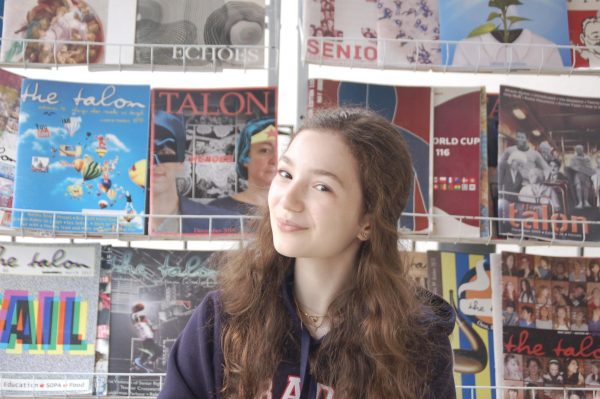On September 9th, 2024, the city of São Paulo was officially declared the metropolis with the worst air in the world by IQAir, a Swiss air quality company. By September 12th, São Paulo’s pollution levels were 16.2 times higher than the World Health Organization recommendations, endangering its 44.42 million residents. Among these 44.42 million residents is the Graded community, including its students, teachers, and staff, whose daily routines are increasingly disrupted by the hazardous air quality. Teachers, for instance, received communications on new norms of how often students should be outside. This particularly impacts the PE teachers who have to transition their classes indoors as a health precaution. The poor air quality is a direct consequence of the rise of forest fires in Brazil since, as of September 18th, the states of Amazonas, Mato Grosso, Mato Grosso do Sul, Pará, and Rondônia—regions heavily impacted by deforestation and the dry season—had a total of 39,247 fire hotspots. This surge is intensifying Brazil’s pollution levels, creating an environmental crisis, and highlighting the urgent need for action and adaptation during these critical times.
São Paulo’s air is not only menacing – it is completely insalubrious, a title and term used by Brazilian citizens and the U.S.A.’s Environmental Protection Agency. As of September 13th, the metropolis held this title for 5 days in a row. Particularly, September 11th, when orange hues were predominant in the sky, was the worst day of air quality in the history of the metropolis in terms of air quality index (AQI) as its measure of 184 AQI surpassed the boundary of 150, where pollution is considered as threatening for the larger population. The health consequences of this for the Brazilian population are undeniable. Air pollution can cause an increase in respiratory issues such as asthma and lung infections, as well as cardiovascular problems like heart attacks and strokes.
In response to health and safety concerns, Graded’s sports teams have had to adapt to recent changes. For example, the Varsity girls’ soccer team had to train indoors on the 13th of September due to the hazardous air quality. “I’ve always been aware of climate issues and that they had an impact on daily life, but I never had anything like forest fires happen so close to me,” said Ines Lora, a sophomore member of the team. She also highlighted how the team had to persevere to get used to the indoors, especially because of the size difference between the court and the hard floor, instead of turf. These adaptations reflect the broader impact of air quality on daily activities and athletic programs at Graded, underscoring the importance of collaboration and adaptability during this time.
Fortunately, researchers have been reporting a downward trend, as evidenced by the air quality measurement of 151 AQI recorded on the 14th. While this is still considered dangerous by the Environmental Protection Agency, it was still evidence of progress. Over a single weekend, São Paulo dropped to being the 81st of 120 cities with the worst air quality worldwide, as reported on September 15th. This phenomenon is most likely the consequence of decreased human activity, such as vehicle usage, hence lowering carbon emissions. Moreover, the return of rainfall on the 14th and 15th also proved to regain the metropolis’ air quality. According to Dona Marcia Souza, a Brazilian Social Studies teacher here at Graded: “When it rains, it washes the atmosphere for us and it dilutes the pollutants. This is important because the humidity increases, which gives us that feeling of breathing better. The absence of rain leads to a situation where we feel this pollution more intensely.” Additionally, she emphasized that São Paulo, historically known for its rivers and lakes, has lost much of its natural water systems. This has contributed immensely to the current pollution crisis because these water systems once filtered pollutants and reduced the heat that worsens pollution levels. This enforces the need for effective water management to combat air quality issues.
Despite the improvement of São Paulo’s air pollution ranking, the week of September 9th should serve as a warning of the danger of forest fires which caused it. Dona Marcia highlights that it is the wind that carries pollution from these fires to São Paulo. She notes, “The fire doesn’t have coordinated action. When you take the satellite images of this period, you see clearly the moment that there was no fire and suddenly, at the same time, you have fire spots in several places.” This demonstrates how rapidly the fires can spread, significantly impacting air quality. Heightening awareness and action to resolve this matter becomes less of an option and more of a necessity, as many nations around the world are dependent on Brazil’s rainforests.
The rise in humidity for the week of September 16th may have temporarily helped the city of São Paulo’s air yet, these results are not permanent. Even if the air quality index has decreased, an index of 100-150 is enough to put specific groups at risk, such as children and the elderly. As Dona Marcia stresses, “The problem is very democratic; it will take everyone without exception.” Lasting solutions require ongoing efforts from communities in Brazil as a whole to tackle pollution, including the Graded community. This includes pushing for cleaner transportation options and supporting renewable energy initiatives. Additionally, adopting more sustainable daily habits—such as reducing energy use and waste—can help reduce the harmful effects of air pollution. Only through consistent action and public engagement does it become possible to protect both the environment and the health of São Paulo’s residents.
Sources:
“Índice de Qualidade do Ar.” MSD Manual. Accessed September 29, 2024. https://www.msdmanuals.com/pt-pt/casa/multimedia/table/%C3%ADndice-de-qualidade-do-ar
Poder360. “São Paulo é a metrópole com o pior ar do mundo pelo 5º dia seguido.” Accessed September 29, 2024. https://www.poder360.com.br/poder-sustentavel/sao-paulo-e-a-metropole-com-o-pior-ar-do-mundo-pelo-5o-dia-seguido/#:~:text=S%C3%A3o%20Paulo%20continua%20como%20a,segundo%20o%20site%20su%C3%AD%C3%A7o%20IQAir.
https://abifer.org.br/grande-camada-de-poluicao-e-vista-no-ceu-de-sp/















